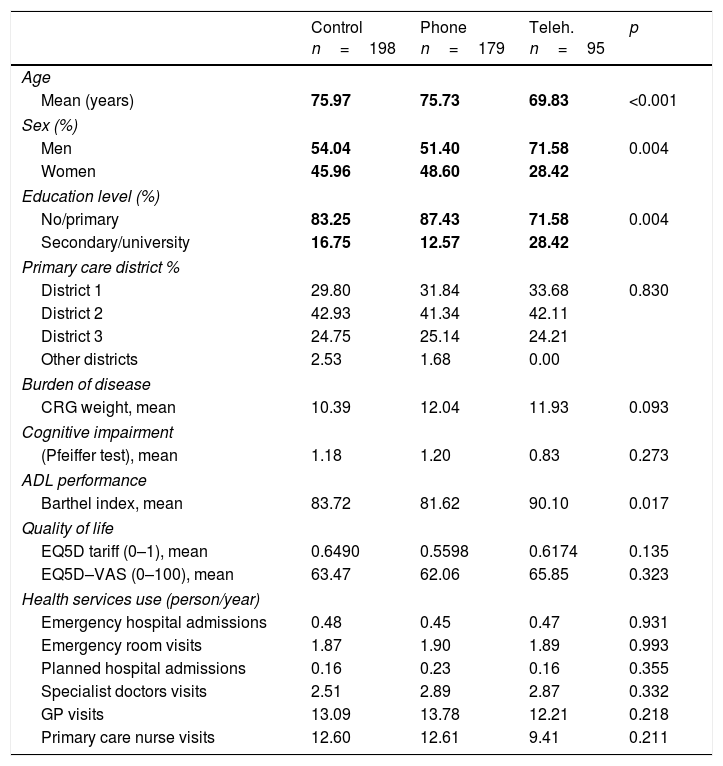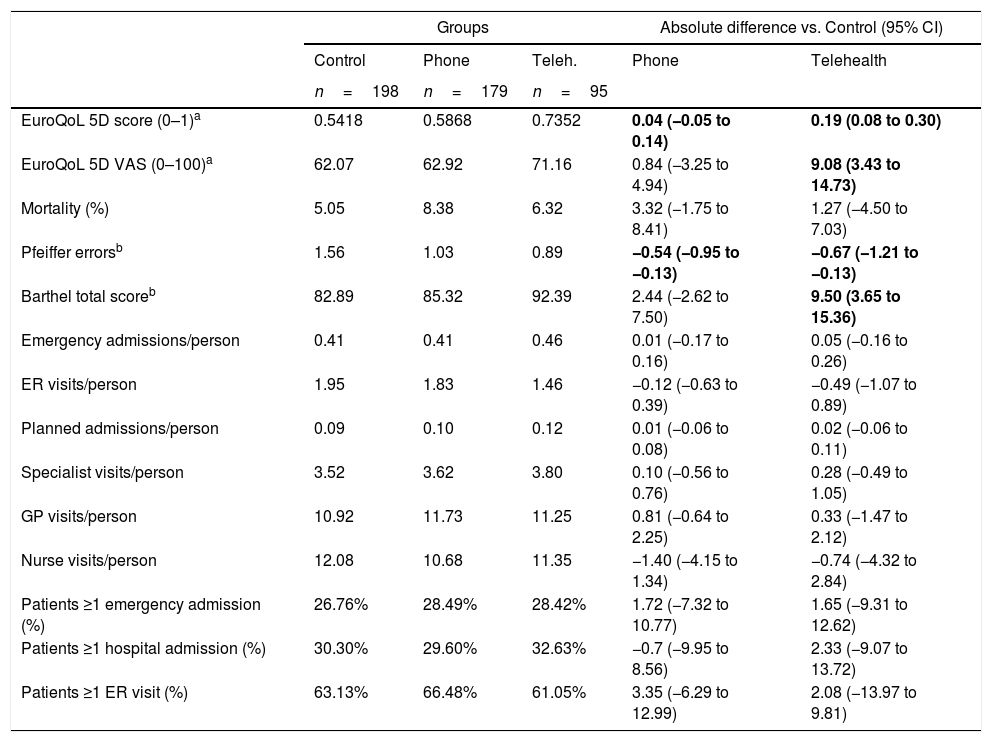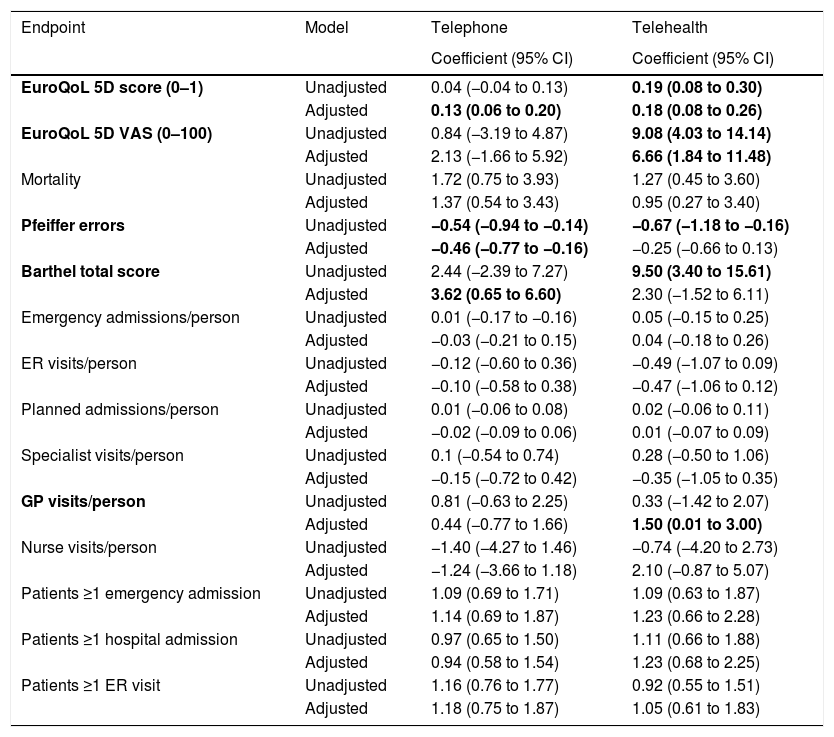To assess the effect of home based telehealth or structured telephone support interventions with respect to usual care on quality of life, mortality and healthcare utilization in elderly high-risk multiple chronic condition patients.
Patients and methods472 elderly high-risk patients with plurimorbidity in the region of Valencia (Spain) were recruited between June 2012 and May 2013, and followed for 12 months from recruitment. Patients were allocated to either: (a) a structured telephone intervention, a nurse-led case management program with telephone follow up every 15 days; (b) telehealth, which adds technology for remote self-management and the exchange of clinical data; or (c) usual care. Main outcome measures was quality of life measured by the EuroQol (EQ-5D) instrument, cognitive impairment, functional status, mortality and healthcare resource use. Inadequate randomization process led us to used propensity scores for adjusted analyses to control for imbalances between groups at baseline.
ResultsEQ-5D score was significantly higher in the telehealth group compared to usual care (diff: 0.19, 0.08–0.30), but was not different to telephone support (diff: 0.04, −0.05 to 0.14). In adjusted analyses, inclusion in the telehealth group was associated with an additional 0.18 points in the EQ-5D score compared to usual care at 12 months (p<0.001), and with a gain of 0.13 points for the telephone support group (p<0.001). No differences in mortality or utilization were found, except for a borderline significant increase in General Practitioner visits.
ConclusionsTelehealth was associated with better quality of life. Important limitations of the study and similarity of effects to telephone intervention call for careful endorsement of telemedicine. Clinicaltrials.gov (identifier: NCT02447562).
Evaluar el impacto de un programa de telecuidados domiciliarios o de apoyo telefónico con respecto a cuidados habituales sobre la calidad de vida, la mortalidad y el uso de recursos en ancianos de alto riesgo pluripatológicos.
Pacientes y métodosSe reclutaron 472 pacientes ancianos con plurimorbilidad en la región de Valencia entre junio de 2012 y mayo de 2013 y se les siguió durante 12 meses. Los pacientes fueron asignados a: a) una intervención de apoyo telefónico estructurado, con recordatorios y seguimiento por enfermería cada 15 días; b) telecuidados, que añade tecnología para el automanejo y la transmisión remotos de información clínica; o c) cuidados habituales. Las medidas de resultado fueron calidad de vida medida con el instrumento EuroQoL-5D (EQ-5D), afectación cognitiva, estatus funcional, mortalidad y uso de recursos sanitarios. Debido a fallos en el proceso de aleatorización, se ajustó los análisis mediante propensity scores para controlar las diferencias basales entre grupos.
ResultadosLa puntuación EQ-5D fue significativamente mayor en el grupo de telecuidados frente a cuidados habituales (dif. 0,19, 0,08 a 0,30), pero no frente a apoyo telefónico (dif. 0,04, −0,05 a 0,14). En análisis ajustados, la inclusión en el grupo de telecuidados se asoció con la obtención de 0,18 puntos adicionales en la escala EQ-5D comparado con cuidados habituales a 12 meses (p<0,001), y con 0,13 puntos en el caso de apoyo telefónico (p<0,001). No se hallaron diferencias en mortalidad o uso de recursos, salvo un incremento marginal en visitas al médico de AP.
ConclusionesLos telecuidados se asociaron con una mayor calidad de vida. Limitaciones importantes del estudio y la similitud de los efectos con la intervención de apoyo telefónico llaman a un apoyo ponderado de las tecnologías e-health. Clinicaltrials.gov (identifier: NCT02447562).










